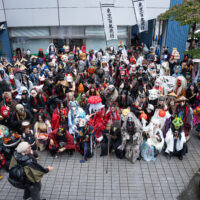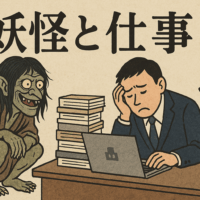
Dear Iwate, Let's talk about Kappa
Hello everyone. I'm Ema. I've been asked to write an article here. I look forward to hearing from you.
I thought about what to talk about first, and I thought about the topic of demons and snow women, but I thought kappa would be the best topic. Zashiki Warashi and kappa are the main earners of Ninohe and Tono. (I'll tell you about Zashiki Warashi some other time... I'm sure you all know the inns where Zashiki Warashi appear.)
But why are the kappa of Tono still so famous, even though there are kappa all over the country? Is it the people, the stories, or the environment?
The Yokai Shop also came in 2014 (Article from that time^^) Kappabuchi in Tono is indeed a beautiful stream. I recommend visiting at dusk. There are no people around and the setting sun shines brightly on the quiet water. However, dusk is also the time when the sky and the sea cross paths, so please be careful.
(After the temple gates close, you cannot enter the grounds, so you will have to take a detour. The road is not paved, so be careful where you step.)
At Kappabuchi, you can catch kappa if you purchase a permit, and there are vegetables hanging from the end of the string. I had only ever thought of cucumbers. Kappa means cucumbers. Cucumbers mean kappa. Otherwise, kappamaki wouldn't be complete. Or so I thought. I'd like you to see for yourself, but I've seen green peppers in addition to cucumbers.
(I like fresh vegetables.)
Despite this, kappa are omnivores who also love to remove anal beads and internal organs, and even horses.
The kappa tries to pull the horse into the water, and is caught by a human (of course, since such stories tend to remain, there must have been kappas who managed to get the horse. The odds of winning are interesting...). In Morioka, there is a kappa who tried to steal and eat the horse, but was caught, reprimanded, and swore not to do any more mischief or come back there.
Its name is Yugaose Kappa. There is a stone statue at the foot of Yugaose Bridge over the Kitakami River. It is about a 15-minute walk from both Furukata Castle (Iwate) and Morioka Station. It is an area that can be considered part of the city, both in the past and today. There are kappas in places like this in Iwate. (Maybe they moved because they were caught and scolded?)
By the way, what kind of kappa do you imagine?
Kappa come in all sorts of shapes and there are many theories about their true identity, but I like the otter theory. They have a smooth form, webbed feet, make a squeaking sound, and are small and mischievous. They could probably pull people's feet out of the water and bother them.
The Japanese river otter is said to be extinct, so I wonder if the kappa, which originated from the otter, has also become extinct...
They wrestle, drag horses and people into the river, enter houses and hold parties, attack women and make them give birth, and give miracle medicines as an apology. They have red faces and are strong, which is similar to the migrant demons. There are many stories about kappa all over the country, but I wonder how many of them are real kappa. I'm thinking about this as I walk through Iwate today, gazing at the fields by the river that are completely white with snow.
(I wonder what kappa eat in the winter... swans?)








No comments yet.